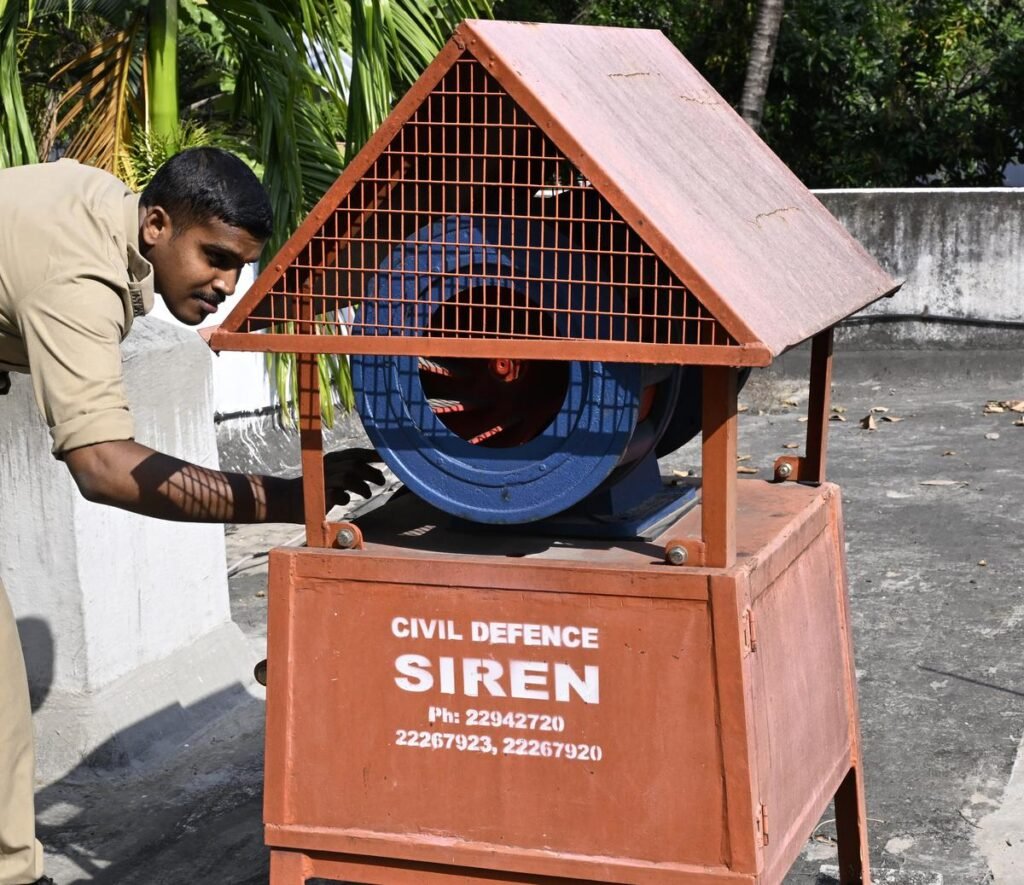
Civil Defence Drill in India: What, Why & How?
CLAT Current Affairs 2026 | Civil Defence in Focus
best online coaching for CLAT, online coaching for CLAT, CLAT current affairs 2026
INTRODUCTION: Why in News?
On May 7, 2025, the Government of India directed all states and union territories to conduct mock civil defence drills across 244 officially categorized Civil Defence Districts. The drill was aimed at testing preparedness in the event of a hostile attack or national emergency, particularly post recent concerns of cross-border threats.
The directive comes under the ambit of the Civil Defence Exercise and Rehearsal, focusing on air raid sirens, blackout measures, and civilian protection protocols. It marks one of the largest coordinated drills post-independence, highlighting the importance of national readiness.
POINT-WISE SUMMARY: Key Highlights from the Drill Announcement
- Objective of the Drill:
- To assess and enhance readiness of civil defence mechanisms during a hostile attack.
- The drill tests government response on multiple fronts—public communication, infrastructure security, and emergency response.
- Scope:
- To be conducted on May 7, 2025 across 244 Civil Defence Districts.
- Includes mock drills, air raid warnings, blackout implementation, and camouflaging vital infrastructure.
- Ministry Oversight:
- Conducted under the directive of the Ministry of Home Affairs, which categorized 259 Civil Defence Districts into three categories based on threat perception.
- Categorization of Civil Defence Districts:
- Category I: 13 districts – require full implementation of civil defence.
- Category II: 45 districts – require partial implementation.
- Category III: 201 districts – require basic readiness only.
- Geographical Spread:
- Category I areas include parts of Delhi, Gujarat, Maharashtra (Mumbai), J&K, Punjab, Rajasthan, Odisha, Tamil Nadu, and Uttar Pradesh.
- Nature of Activities in Drill:
- Air raid warning systems tested.
- Blackout protocols enforced (power cut or cover-up of lights).
- Operationalization of Hotline/Radio Communication Links.
- Activation of civilian protection units like wardens, fire services, shadow control rooms, etc.
- Civilian Involvement:
- Public will be involved via awareness measures and following instructions during drills.
- Evacuation rehearsal, camouflage of key installations like power plants, highways, ports, military zones.
- Legal Framework:
- Exercise falls under the Civil Defence Act, 1968.
- Provides powers to detain individuals, impose curfews, regulate transport, and requisition goods/services.
- Why This Drill Now?:
- Comes shortly after the April 22 terrorist attack at Pahalgam (J&K).
- Interpreted as part of a readiness check in anticipation of future threats, not just routine training.
- Link with External Threats:
- Comes amidst Pakistan’s claim of India’s preparation for air strikes.
- Pakistani intelligence alleged India had moved troops and aircraft—adding to cross-border tensions.
- Historical Context of Civil Defence:
- Introduced seriously after India-China War (1962) and India-Pakistan Wars (1965 & 1971).
- Civil Defence Act passed in 1968 and revised in 1985 to include nuclear and natural disasters.
- Evolution Over Time:
- Initially focused on war preparation (air raids).
- Now includes response to chemical, biological, radiological, and cyber threats.
- Global Practices:
- Countries like South Korea, UK, US, Germany also carry out such drills.
- South Korea did one in August 2023 due to North Korean threats.
- The UK started ARP (Air Raid Precautions) as early as the 1930s.
What CLAT Aspirants Must Note
This topic is highly relevant for:
- Legal Reasoning: Powers under the Civil Defence Act, 1968.
- Current Affairs: Directly links to India’s internal security and defence policy.
- General Knowledge (GK): Understanding historical evolution of civil defence.
- Reading Comprehension: Could be framed as a passage on national emergency laws or drills.
Notes: Explanation of Key Terms for CLAT Students
- Civil Defence: Protection of civilians and infrastructure from military attacks, disasters, or emergencies using organized non-military efforts.
- Blackout Measures: Deliberate darkening of areas (like switching off streetlights) to prevent enemy aircraft visibility during air raids.
- Hotline/Radio Communication Links: Emergency wireless or wired networks used during disasters or wars to coordinate response.
- Shadow Control Rooms: Backup command centers activated when primary administrative centers are disabled or under threat.
- Air Raid Warning System: Sirens or alarms used to alert civilians of an incoming aerial attack or bomb threat.
- Requisitioning Powers: Legal ability of the state to take over private property, vehicles, or services for emergency use.
- ARP (Air Raid Precautions): Pre-WWII system in the UK for protecting civilians during enemy bombing raids.
- Category I/II/III Districts: Classification based on threat perception, determining level of preparedness and drill intensity.
Why is this important for CLAT?
- Understanding laws like the Civil Defence Act, 1968 is crucial for Legal Awareness.
- CLAT GK and Current Affairs sections may test internal security measures, such as emergency powers and disaster response frameworks.
- This also connects with constitutional rights (detention without trial, control of communication) and possible legal scrutiny.
Conclusion
The Civil Defence Drill of May 7, 2025, marks a significant moment in India’s security preparedness narrative. For CLAT aspirants, it serves as a multidimensional topic cutting across current affairs, law, and governance. Keeping abreast of such developments is critical for students aspiring to excel in the General Knowledge and Legal Reasoning sections of CLAT 2026.







